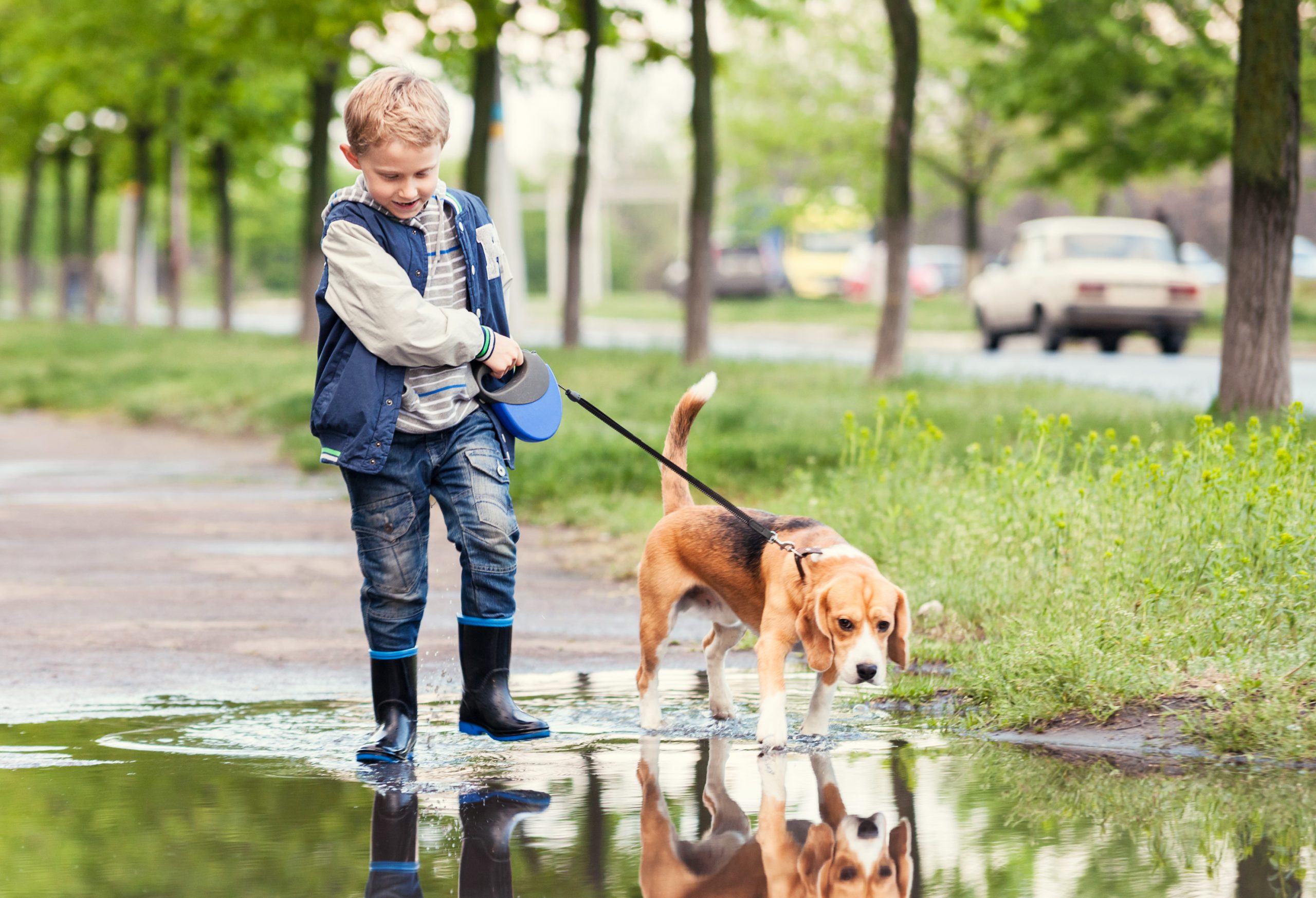
Safety First
Young children love playing with dogs and are often keen to hold their leads. While this is very sweet, it’s not really something that should be encouraged.
Small children can be pulled over if your dog suddenly decides to lunge for a passing rabbit or chase a bird. If you are walking near a road this can be very dangerous. Even well-behaved dogs can be unpredictable and may pull strongly if they see something exciting.
If you have babies in buggies or bigger children on bikes then you want to be confident you have control of your dog and that its lead isn’t going to get tangled up in wheels causing havoc.
If you are in an open space and your dog can be trusted to come back then it’s much better for them to be allowed to run and get some proper exercise rather than being kept on a lead to entertain a child.
Getting Involved
Children can be encouraged to throw balls or play fetch with dogs when out and about. As well as being lots of fun and exercise for both of them this will help keep up your dog’s training in coming back and let them bond with your child.
You can involve your children in other ways on walks by getting them to help with training. A child can easily learn how to make a dog sit by holding a treat over their head and saying ‘sit’. They can practice this at home and when they are good enough will be able to get your pet to sit before they cross the road.
Know the signs
Children who are brought up with dogs can often be over confident and will assume that all dogs are just as friendly as their own. Teach them that strange dogs are not to be approached without permission from their owner, especially if they are showing signs of aggression (growling, barking, hackles up) or fear (trembling, low posture, tail between their legs, lip licking).
It is a good idea to teach a child what to do if they are approached by a strange dog or one which is showing aggressive behavior. They should stand still like a tree with their arms by their sides, keep quiet, and not make eye contact. This is normally contrary to what most children will do when threatened. Waving arms and screaming is likely to increase the chances of the child getting bitten.
Educational Fun
A dog walk is also a great opportunity to teach your child the green cross code. Ask your dog to sit politely at the kerb while you listen for cars and look both ways. You can then say ‘OK’ or ‘heel’ when it’s safe to cross. If you have a really clever dog they can even learn to look left and right too! Simply hold the treat to the left and say ‘left’, then do the same on the right. Eventually they will be able to turn their head when you say these words.
You can also play the sit game by asking your child to get the dog to sit at various points on your walk, giving both of them lots of training practice.
Enjoy
Don’t be afraid to take your children and dogs on walks together, this can be lots of fun, but just make sure you keep hold of the lead yourself so you can always stay in control.
